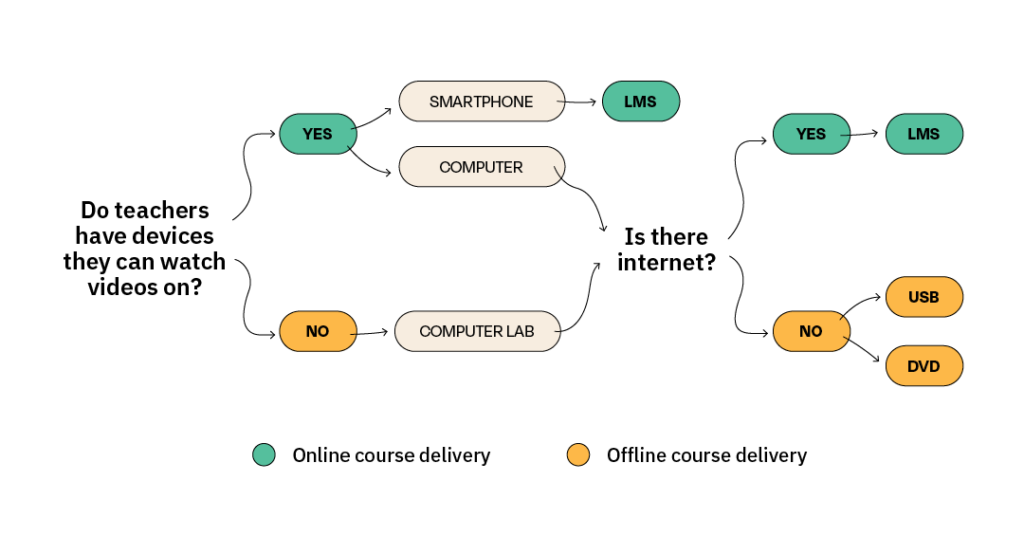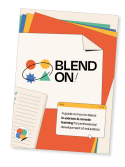In Practice
How Aga Khan Foundation uses a decision tree to assess participants’ accessibility to technology
Considerations for accessible online learning are multi-facetted. One core aspect is learners’ accessibility to devices and bandwidth for watching instructional videos. The Aga Khan Foundation uses a simple “decision-making tree” for assessing participants’ accessibility to appropriate technology which influences how video-based learning content is disseminated.
Not captured in the “tree”, but of importance is how the accessibility to different types of devices influences content creation. For example, data from the Aga Khan Foundation’s Learning Hub demonstrates that learners with mobile devices spend on average 5.5 minutes engaged in learning compared to those with desktops and tablets who spend over 16 and 45 minutes respectively. Producers of learning content can use such data to make decisions around dissemination strategies as well as length of learning content.

Share this practice:
In Practice
You can find out more practical use cases here
Subscribe to newsletter

Download our guide for a more in-depth and comprehensive look at developing a successful blended CPD programme.
© Copyright 2023 VVOB - vvob.org